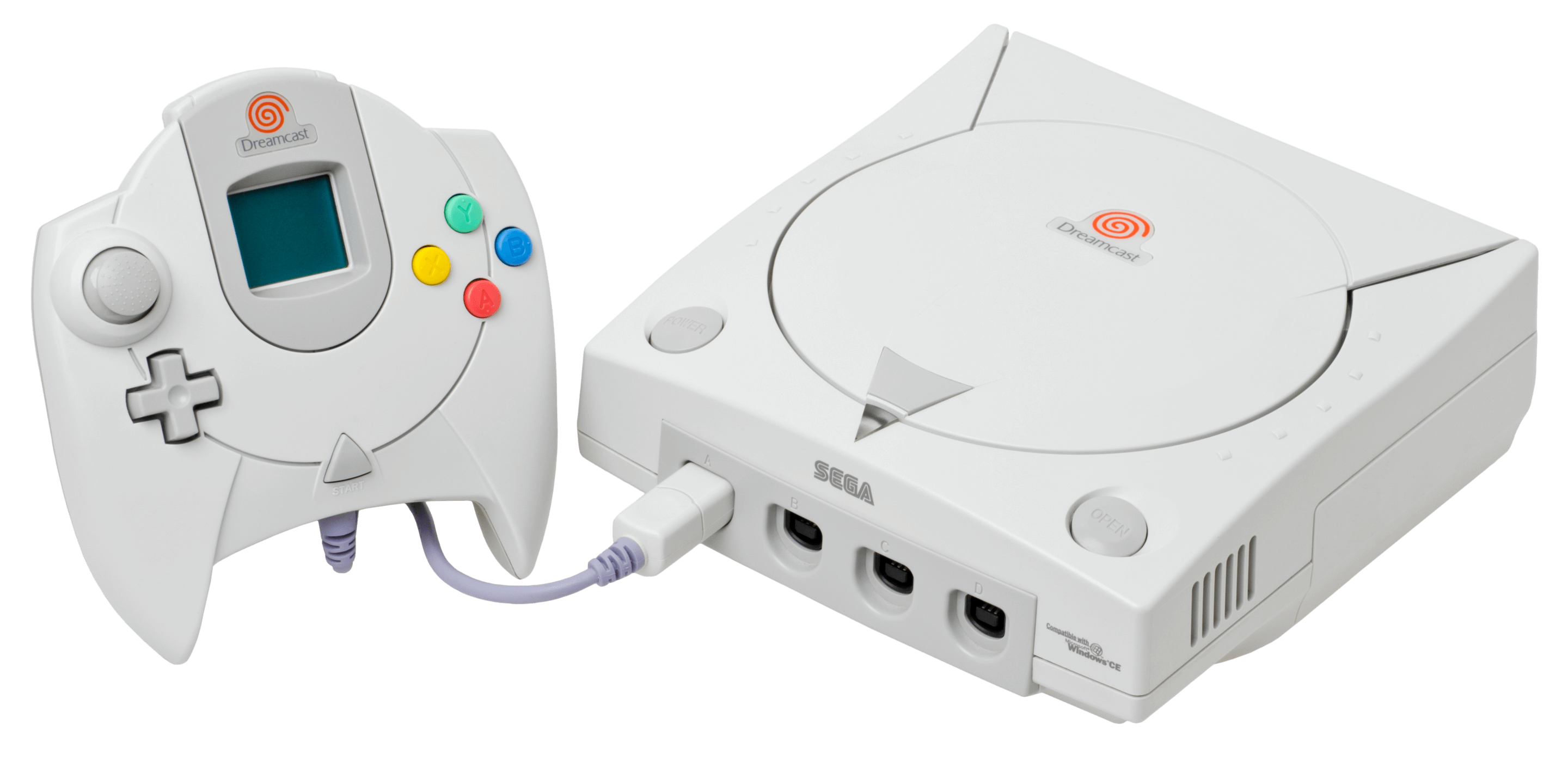
The Sega Dreamcast, released in 1998 in Japan and 1999 worldwide, was Sega’s final home console—and arguably its most forward-thinking. Arriving ahead of the PlayStation 2, GameCube, and Xbox, the Dreamcast was the first sixth-generation console and the first to include a built-in modem for online play, marking a bold step toward connected gaming. It featured advanced graphics capabilities, a Windows CE development option, and a unique Visual Memory Unit (VMU) that functioned as both a memory card and a mini-game display. Despite launching with critical praise and a strong game lineup, the Dreamcast’s life was tragically short.
The Dreamcast hosted a wealth of innovative and genre-defining titles. Sonic Adventure showcased high-speed 3D platforming, Jet Set Radio introduced cel-shaded art styles, and Shenmue pioneered open-world storytelling and real-time systems. Fighting games like Soulcalibur and Marvel vs. Capcom 2, racers like Crazy Taxi, and cult hits like Skies of Arcadia and Rez turned the Dreamcast into a haven for creative risks and arcade-quality home experiences. Online titles such as Phantasy Star Online set the stage for future MMORPGs on consoles.
Despite selling over 9 million units, the Dreamcast was discontinued in 2001. Poor timing, the looming threat of the PlayStation 2, and lingering distrust from Sega’s past hardware failures contributed to its downfall. Yet in its brief life, the Dreamcast became a symbol of bold innovation and artistic freedom. It’s remembered as a console that was ahead of its time—one that helped shape the future of gaming even as it marked the end of Sega’s era as a hardware manufacturer.
Sega Dreamcast Technical Specifications
| Component | Specification |
|---|---|
| CPU | 200 MHz Hitachi SH-4 32-bit RISC processor |
| Graphics | PowerVR2 GPU @ 100 MHz, 16.7 million colors, ~3 million polygons/sec |
| Resolution | 640×480 (standard VGA support) |
| Memory | 16 MB RAM, 8 MB video RAM, 2 MB sound RAM |
| Media | GD-ROM discs (1 GB capacity), proprietary format |
| Sound | 64-channel Yamaha AICA with 3D audio support |
| Storage | VMU (Visual Memory Unit) memory cards with LCD display |
| Online | 56k modem (built-in), broadband adapter (optional) |
| Controllers | Analog controller with expansion slots for VMU and accessories |
| Release Date | 1998 (Japan), 1999 (North America/Europe), discontinued 2001 |